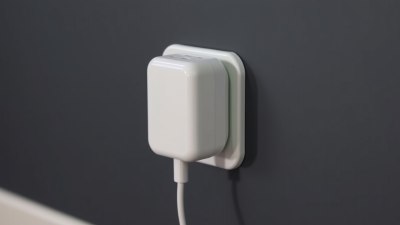How to Charge Your Devices in South Africa Without Power Problems
Discover effective ways to charge your devices in South Africa while avoiding power issues.

Charging devices in South Africa can sometimes be challenging due to frequent power outages and load shedding. However, there are various efficient methods and practical tips that enable you to keep your devices charged without falling victim to unexpected power interruptions. This article will guide you through several strategies that ensure you can stay connected and powered up, regardless of the situation.
Understanding Load Shedding and Power Problems
Load shedding is a deliberate shutdown of parts of the electrical grid to prevent the complete failure of the system. In South Africa, this is typically due to a power generation shortfall, which means that power supply cannot meet demand. This results in scheduled outages that can last for a couple of hours at a time, affecting daily activities, including the ability to charge electronic devices.
To effectively combat the challenges brought by load shedding, it's essential to understand your power consumption patterns and the timing of when you will need to charge your devices.
Investing in Portable Power Banks
One of the most convenient solutions for charging devices during power outages is the use of portable power banks. These are compact, rechargeable batteries that can provide power to your devices when you don’t have access to a wall outlet. When selecting a power bank, consider the following factors:
- Capacity: Measured in milliamp hours (mAh), a higher capacity means more devices can be charged or charged multiple times before needing a recharge.
- Output ports: Look for power banks with multiple output ports to charge several devices simultaneously.
- Size and weight: If mobility is a priority, opt for a lightweight and compact power bank that won’t add too much bulk.
Charge your power bank during periods when electricity is available, and keep it handy when outages occur. This will ensure you have a reliable source of power for your essential devices.
Using Solar Chargers
Solar chargers are an excellent off-grid solution that allows you to harness solar energy to charge your devices. They come in various sizes, from small panels suitable for charging smartphones to larger kits capable of powering laptops or even small appliances. Here are some advantages of using solar chargers:
- Renewable source: Solar energy is abundant and free, making it a sustainable option.
- Durability: Many solar chargers are designed for outdoor use and can withstand different weather conditions.
- Versatility: Some solar chargers come equipped with battery packs, which can store energy for use when the sun isn’t shining.
Ensure you place your solar charger in an optimal location where it can receive direct sunlight for the most effective charging. When planning outdoor trips, bring this charger along as an essential companion.
Locating Public Charging Stations
Another temporary solution during power outages is to utilize public charging stations. Many malls, cafes, airports, and public libraries offer charging facilities for patrons. Consider these tips for using public charging locations:
- Plan ahead: Make a list of nearby places that provide charging stations. This will help you to quickly access power when your devices run low.
- Bring charging cables: Always carry the appropriate charging cables for your devices, as you might not be able to borrow one.
- Security: Ensure you monitor your devices while they charge in public spaces to avoid theft.
Finding a spot to charge your devices during outages can reduce stress and ensure communication lines remain open.
Using an Uninterruptible Power Supply (UPS)
A UPS is a backup power source for electronic devices. It consists of a battery that can store electricity to supply power when the main source fails. Here are some advantages of using a UPS:
- Instant power: A UPS provides immediate backup when power loss occurs, ensuring your devices are charged with minimal disruption.
- Protection: It protects your devices from power surges, spikes, or electrical noise that could potentially damage your electronics.
UPS units come in various capacities and configurations, so it’s essential to choose one that suit your needs based on the number of devices you want to charge and how long you anticipate needing backup power.
Using Vehicle Power Adaptors
Most vehicles come equipped with a 12V power outlet, often referred to as a cigarette lighter socket, allowing you to charge devices while on the go. Here are some tips:
- Keep a car charger: Ensure you have a compatible car charger that works with your devices.
- Know your vehicle: Make sure your vehicle is properly maintained, as a dead battery will not allow you to charge devices.
- Use wisely: Remember that using your car battery to charge devices can drain the vehicle’s battery if left running for an extended period without the engine being on.
Charging your devices in your vehicle can be a lifesaver during sudden outages when you are out and about.
Prioritizing Device Management
Proper management of your battery life can significantly reduce the need for frequent charging. Here are some tips for conserving battery life:
- Lower screen brightness: Decrease your device’s screen brightness or enable automatic brightness adjustments.
- Close unused apps: Ensure you are not overloading your device’s processor by closing background applications.
- Use battery-saver mode: Most modern devices have a battery-saver setting that reduces background activity and extends battery life.
By taking control of how you use your devices, you can ensure they last longer, especially during critical times when charging options are limited.
Keeping Essential Devices Charged
When faced with power problems, it is crucial to prioritize which devices need to be charged first. Consider the following:
- Communication devices: Smartphones should top your list as they facilitate communication and access to emergency services.
- Medical devices: If you or someone you know relies on a medical device, ensure it is charged and ready since outages can impact its operation.
- Essential electronics: Laptops or tablets that are used for work or school should also be prioritized for charging.
By focusing on charging the most essential devices first, you can avoid panic and ensure safety when power issues arise.
Educating Yourself About Load Shedding Schedules
Being informed about load shedding schedules in your area can alleviate the inconveniences caused by power disruptions. Here are a few points to consider:
- Official resources: Follow official social media pages or sign up for alerts from Eskom, the national power supplier, to receive updates on load shedding.
- Local trends: Look into local communities that may share insights on frequent outages and how long they typically last.
By being proactive in understanding load shedding, you can better plan your charging needs and avoid being caught unprepared.
Conclusion
Charging your devices in South Africa without falling prey to power problems is not only possible but can also be managed with a few efficient strategies. The key lies in preparation, utilizing alternative power sources, and understanding your electricity consumption. By following these tips and incorporating the right technologies, you can ensure that you remain connected and that your devices are charged, no matter the circumstances of power supply interruptions. Equip yourself with the knowledge and tools necessary to navigate power challenges effectively, and you will find yourself less impacted by load shedding and more empowered to stay connected.











